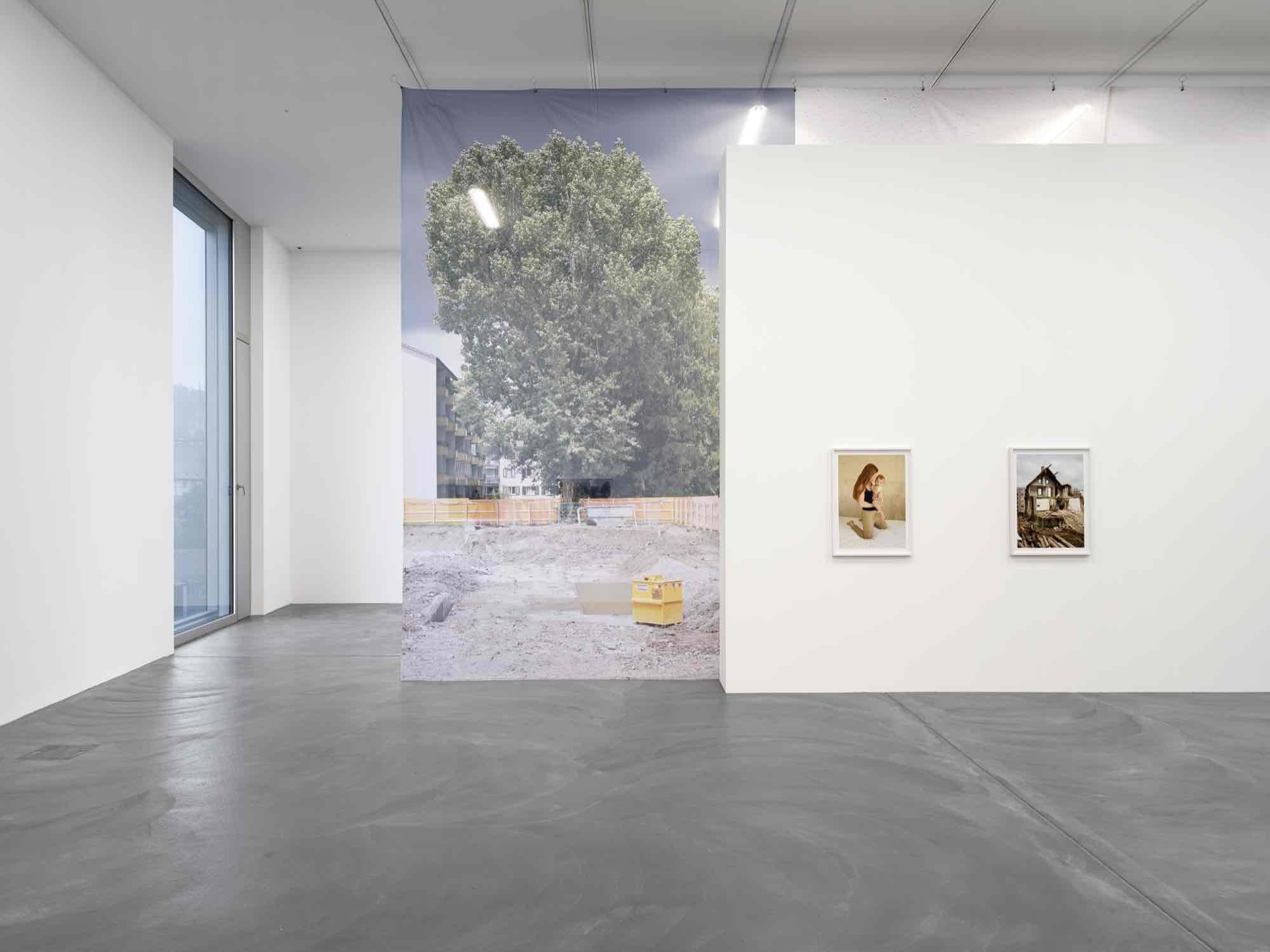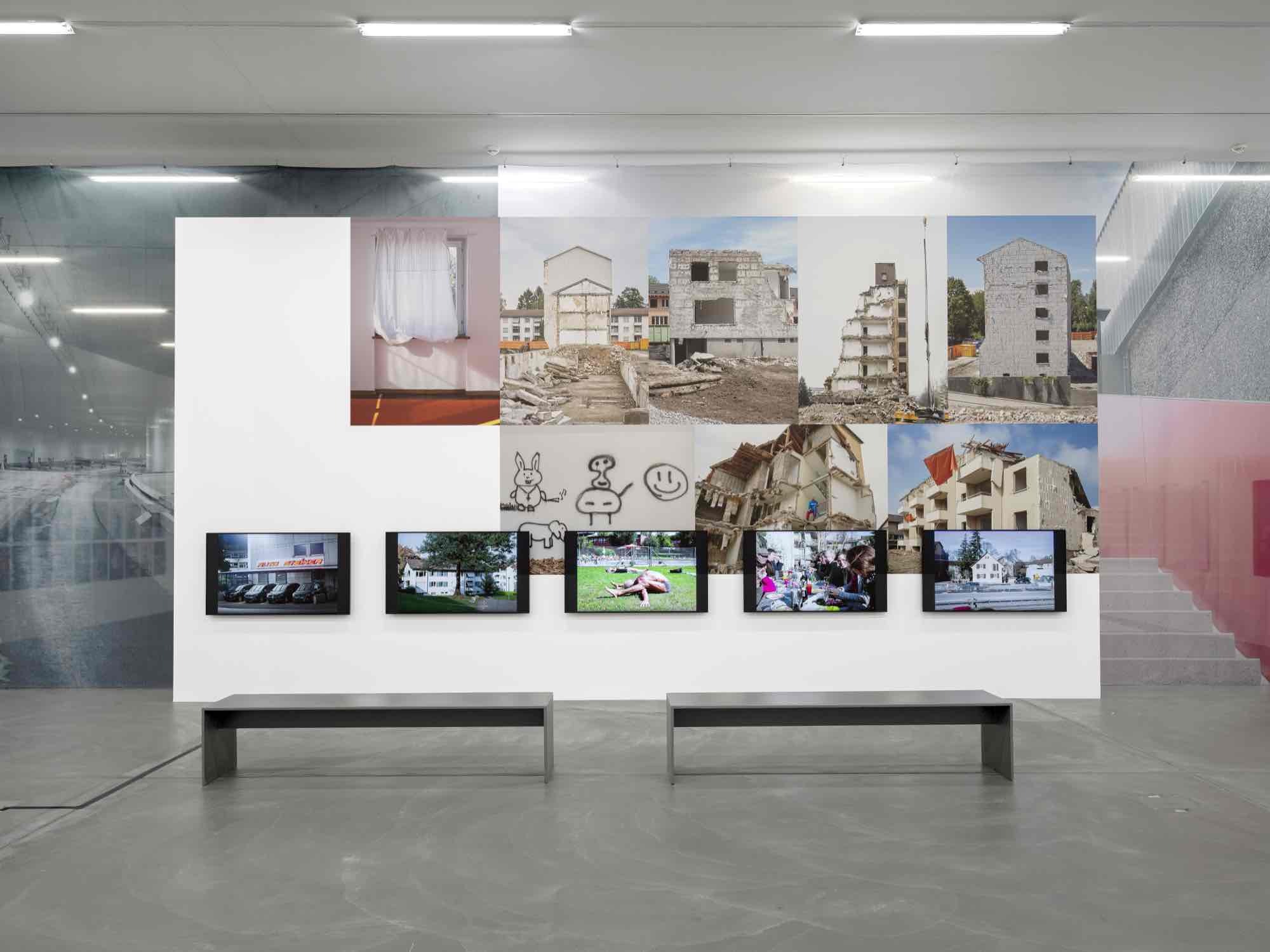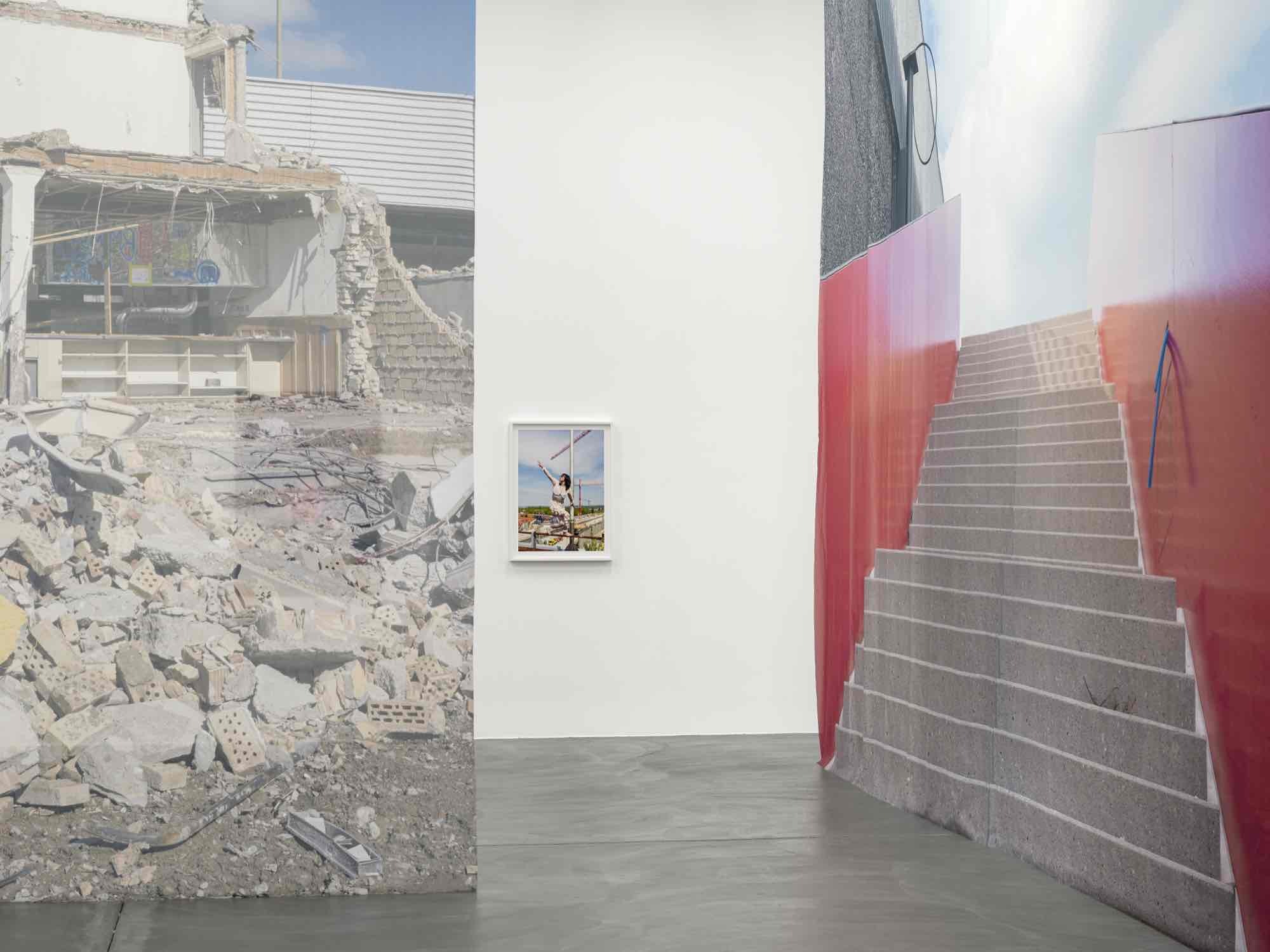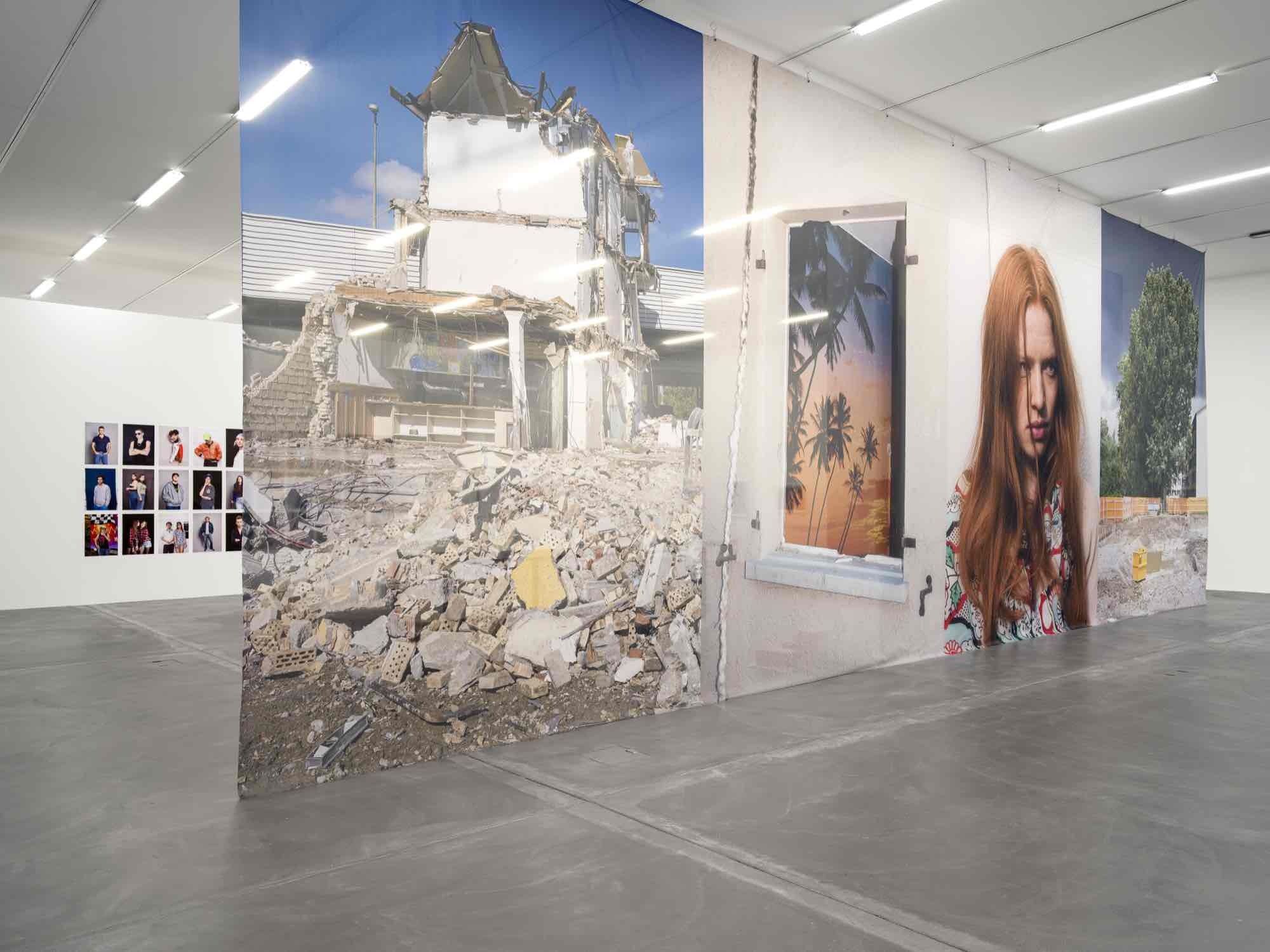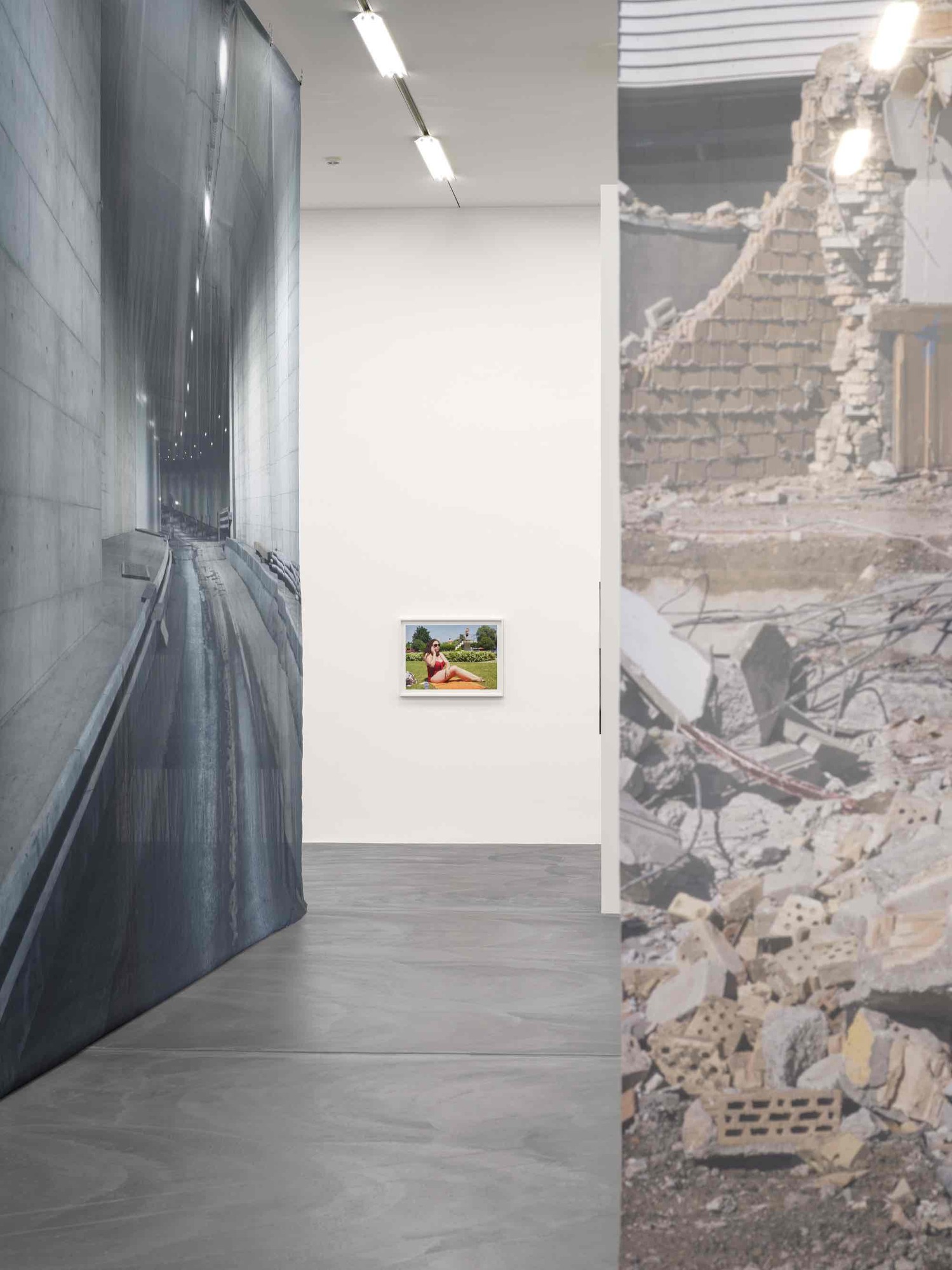Ruth Erdt
K12 – Schwamendingen
28 Sep 2024 - 19 Jan 2025
Schwamendingen in Zürich, like Geneva’s Meyrin or Bern’s Bümpliz-Bethlehem, is one of Switzerland's legendary suburbs. Located at the northern end of Zürich, it was incorporated into the city of Zürich in 1934 and designated ‘District 12’ (K12) in 1971. This is why this exhibition is named K12 Schwamendingen.
Schwamendingen lies under the southern flight path of Zürich’s nearby Kloten Airport and is bisected by the A1 motorway, on which 120,000 vehicles travel every day. Schwamendingen’s Chilbi fair is famous throughout Switzerland, as are the rapper Bligg, TV presenter and actress Viola Tami and national footballer Ricardo Rodríguez, all of whom come from the district.
When she moved to Schwamendingen in the early 1990s, Ruth Erdt began to photograph her neighbourhood. As she recounts, it was a strange place for her at first, almost beyond the city, not really respected – many looked at it askance. “In my photos, I always tried to make Schwamendingen look as if the pictures could be anywhere – in Europe, in the world, but not in Zürich, not in Switzerland. Later, I began to take more specific photographs. Still with the aim of refusing any kind of categorisation, whether in terms of time or location. Themes were mainly gardens, the forest, demolished buildings, people and the Chilbi.” Then, however, she observed how her son's generation claimed the place for themselves, turned prejudice into pride and celebrated K12 in music, tags and gesture. When Erdt’s collaboration with the city of Zürich's Working Group on Art in Public Spaces (AG KiöR) began around 2012, she broadened her focus. The aim was to establish a dialogue by means of carefully crafted series: on the one hand a dialogue with the neighbourhood, but also with comparable outlying districts in European cities when it comes to gentrification, identity or profound upheavals caused by infrastructure projects.
Since then, Erdt has taken over 60,000 pictures, around 5,000 of which can be seen here, many of them for the first time. Erdt's commitment has resulted in K12 Schwamendingen, an extended study of a particular place and an exemplary investigation of one subject using the tools of art. It is also a tribute to the people who live and work here, the students, workers, creatives and those left behind, pensioners, children and dogs, the people who only live here for a short time – and those who will never move away. And, last but not least, it is a study in the potential of photography and how it is presented. Thus this exhibition explores different media: framed photography, photography as art, photography as a poster, as a slideshow, as a document, as a curtain and a banner, as disposable and Instagram, as wallpaper and photography as a means to literally and figuratively make a portrait.
The exhibition celebrates Schwamendingen as an extraordinarily ordinary place. It is an homage to an apparent normality that does not exist without its antithesis, drama. It is no coincidence that the environmentally destructive motorway route keeps cropping up – and the massive construction project associated with it: a 450 million-worth enclosure of the motorway that the population lobbied for over decades. This started in March 2019, will be completed this year and cover 950 metres of motorway. A park will be built on top of the enclosed section, a High Line to reconnect previously divided neighbourhoods. - Daniel Baumann
Schwamendingen lies under the southern flight path of Zürich’s nearby Kloten Airport and is bisected by the A1 motorway, on which 120,000 vehicles travel every day. Schwamendingen’s Chilbi fair is famous throughout Switzerland, as are the rapper Bligg, TV presenter and actress Viola Tami and national footballer Ricardo Rodríguez, all of whom come from the district.
When she moved to Schwamendingen in the early 1990s, Ruth Erdt began to photograph her neighbourhood. As she recounts, it was a strange place for her at first, almost beyond the city, not really respected – many looked at it askance. “In my photos, I always tried to make Schwamendingen look as if the pictures could be anywhere – in Europe, in the world, but not in Zürich, not in Switzerland. Later, I began to take more specific photographs. Still with the aim of refusing any kind of categorisation, whether in terms of time or location. Themes were mainly gardens, the forest, demolished buildings, people and the Chilbi.” Then, however, she observed how her son's generation claimed the place for themselves, turned prejudice into pride and celebrated K12 in music, tags and gesture. When Erdt’s collaboration with the city of Zürich's Working Group on Art in Public Spaces (AG KiöR) began around 2012, she broadened her focus. The aim was to establish a dialogue by means of carefully crafted series: on the one hand a dialogue with the neighbourhood, but also with comparable outlying districts in European cities when it comes to gentrification, identity or profound upheavals caused by infrastructure projects.
Since then, Erdt has taken over 60,000 pictures, around 5,000 of which can be seen here, many of them for the first time. Erdt's commitment has resulted in K12 Schwamendingen, an extended study of a particular place and an exemplary investigation of one subject using the tools of art. It is also a tribute to the people who live and work here, the students, workers, creatives and those left behind, pensioners, children and dogs, the people who only live here for a short time – and those who will never move away. And, last but not least, it is a study in the potential of photography and how it is presented. Thus this exhibition explores different media: framed photography, photography as art, photography as a poster, as a slideshow, as a document, as a curtain and a banner, as disposable and Instagram, as wallpaper and photography as a means to literally and figuratively make a portrait.
The exhibition celebrates Schwamendingen as an extraordinarily ordinary place. It is an homage to an apparent normality that does not exist without its antithesis, drama. It is no coincidence that the environmentally destructive motorway route keeps cropping up – and the massive construction project associated with it: a 450 million-worth enclosure of the motorway that the population lobbied for over decades. This started in March 2019, will be completed this year and cover 950 metres of motorway. A park will be built on top of the enclosed section, a High Line to reconnect previously divided neighbourhoods. - Daniel Baumann

